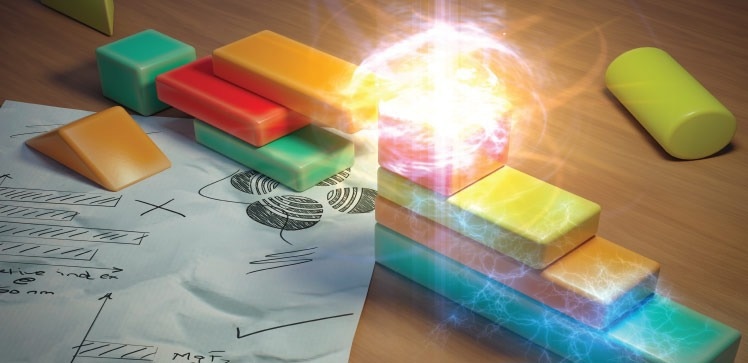Scientists at KAUST have created a solar-cell module that reduces cell-to-module losses by reconsidering the optical design and stacking of the module.
 KAUST scientists have constructed a more efficient solar-cell module made of a combination of two light-absorbing semiconductors: one silicon and the other made from a perovskite material. Image Credit: Reprinted with permission from Xu et al. Copyright 2022 American Chemical Society; Artwork by Hassan Tahini.
KAUST scientists have constructed a more efficient solar-cell module made of a combination of two light-absorbing semiconductors: one silicon and the other made from a perovskite material. Image Credit: Reprinted with permission from Xu et al. Copyright 2022 American Chemical Society; Artwork by Hassan Tahini.
The efficiency of solar cells is constantly being improved in research labs all around the world. However, using these tools in the actual world poses a unique issue. For instance, combining solar cells into modules that can shield delicate components from severe conditions is necessary. These modules may lower power conversion efficiency, negating the meticulously achieved performance increases in the lab.
Lujia Xu, Stefaan De Wolf, and their KAUST colleagues have created a more effective solar-cell module with an improved optical design.
The team’s solar cells were constructed from a mixture of two light-absorbing semiconductors, one composed of silicon and the other of a substance called perovskite. In producing solar cells, silicon is now a widely used material.
Even though perovskites are new material, it has already been demonstrated that putting a thin layer on top of silicon improves performance while just slightly raising costs.
These so-called perovskite-silicon tandem solar cells have previously shown up to 30% efficiency in the conversion of optical energy to electrical energy. In addition, theoretical modeling has suggested that it might reach up to 45%.
However, the KAUST team discovered that the efficiency decreased from 28.9% to 25.7% when they integrated their tandem solar cells into a module. Their module’s construction involved sandwiching the solar cells between two sheets of glass and encasing them in thermoplastic polyurethane.
The research team hypothesizes that the decrease in efficiency is caused by a refractive index mismatch after adding glass and polyurethane straight onto solar cells without cell-to-module optimization, increasing the amount of incoming light reflected as a result.
The group decided to use refractive-index engineering to redesign the module’s optical system to minimize this front reflection loss.
They achieved effective light in coupling by reducing the refractive index mismatch and transferring a coating of magnesium fluoride from the top of the cell to the top of the front glass.
This simple optimization effectively enables the highest short circuit current density—related to the maximum current that can be drawn from the device—that is reported in the literature for monolithic perovskite/silicon tandem solar modules, resulting in a power conversion efficiency increase from 25.7% to 26.2%.
Lujia Xu, Researcher, King Abdullah University of Science and Technology
“We now hope to explore how different materials and texturing the material surface could reduce the current losses from cells to modules even further,” Xu added.
Journal Reference:
Xu, L., et al. (2022) Monolithic Perovskite/Silicon Tandem Photovoltaics with Minimized Cell-to-Module Losses by Refractive-Index Engineering. ACS Energy Letters. doi.org/10.1021/acsenergylett.2c01142.